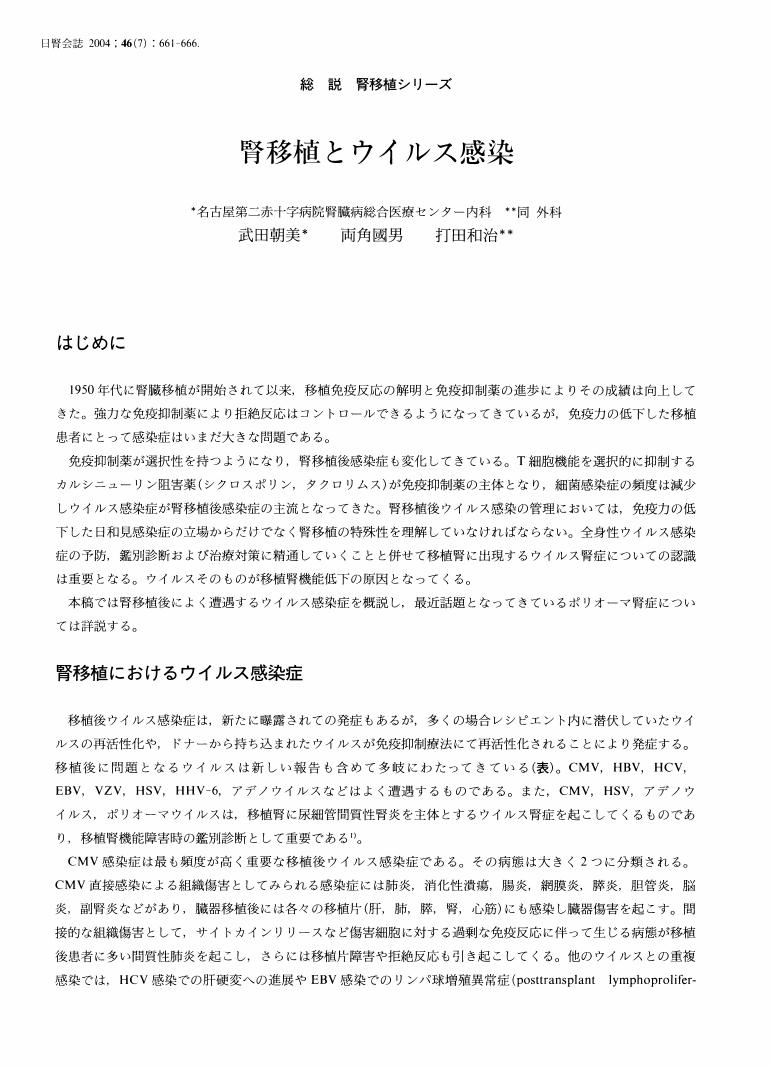2 0 0 0 OA 移植腎病理診断の基礎とBanff分類の変遷
- 著者
- 両角 國男 武田 朝美
- 出版者
- 一般社団法人 日本移植学会
- 雑誌
- 移植 (ISSN:05787947)
- 巻号頁・発行日
- vol.49, no.1, pp.001-005, 2014-03-10 (Released:2014-05-12)
- 参考文献数
- 7
Standardization of renal allograft biopsy interpretation is necessary to guide therapy. This manuscript describes milestones of the Banff classification for renal allograft pathology developed by an international investigators conference.From small beginnings in 1991, the Banff working classification of renal allograft pathology has grown to be a major force for setting standards in renal transplant pathology. The meeting, classification, and consensus process have a unique history.Semiquantitative scorings of key lesions, such as tubulitis, interstitial inflammation, capillaritis, arteritis, and others, make a central core of the Banff scheme. The Banff classification proposed many new concepts related to pathogenesis of rejection. There are many important issues, including T-lymphocyte related rejaction, antibody-mediated rejection (ABMR), chronic active rejection, and C4d negative antibody-mediated rejection. ABMR is associated with heterogeneous phenotypes even within the same type of transplant.The willingness of the Banff process to continually adapt in response to new research and to improve potential weaknesses led to the implementation of six working groups in the following areas: isolated v-lesion, fibrosis scoring, glomerular lesions, molecular pathology, polyomavirus nephropathy, and quality assurance. Furthermore, compelling molecular research data led to the discussion of incorporation of omics technologies and the discovery of new tissue markers with the goal of soon combining histopathology and molecular parameters within the Banff working classification.
1 0 0 0 OA 総説 腎移植シリーズ: 腎移植とウイルス感染
- 著者
- 武田 朝美 両角 國男 打田 和治
- 出版者
- 社団法人 日本腎臓学会
- 雑誌
- 日本腎臓学会誌 (ISSN:03852385)
- 巻号頁・発行日
- vol.46, no.7, pp.661-666, 2004 (Released:2010-05-18)
- 参考文献数
- 10
